At any given time, there’s always a lot of pressure on companies to grow quickly. And for many leaders, one of the quickest ways to fast-track growth is through mergers & acquisitions (M&As).
Yet, as expensive as M&As are, research by Harvard scholars has shown that the failure rate for mergers and acquisitions sits between an alarming 70 percent and 90 percent.
This means that so far, M&A success is more of an exception than the rule. If a whopping 70 to 90 percent of transactions fail, it means that only 10 to 30 percent of transactions succeed. These are shocking statistics and one that puzzles leaders continuously.
Why Do Mergers and Acquisitions Fail?
Since no organisation goes into a merger intending to fail, it’s prudent to ask the question: why do M&As fail so frequently?
Considering that no two deals are the same, the answer to this question may not be absolute or straightforward.
However, if we consider that the one thing all M&As have in common is people, we can safely hypothesise that mergers and acquisitions often fail because of people problems.
People problems can occur in several forms. It can range from the departure of strategic talent to teams that don’t get along to poorly managed employee morale during acquisition. Whichever way it may occur, people problems are not unsolvable.
Recommended Post: How PEO Companies Fast-Track Business Growth
How Do M&A Winners Beat the Odds?
In addition, bearing in mind that even amidst the high rate of failure, some mergers succeed, the question then is: how do M&A winners beat the odds?
The logical answer is successful mergers and acquisitions don’t happen by chance. As with most achievements in life, they result from careful planning and execution and repeated practice.
Companies that succeed in M&A deals work with specialised talent or “dealmakers” trained exclusively on M&A strategy and execution.
The great news is that a number of these experienced dealmakers exist on teams within high-ranking PEOs.
And so, if you are tasked with taking two disparate companies and combining them into a single, high-functioning revenue-making machine, the good news is that you don’t have to go at it alone.
A well-resourced professional employer organisation (PEO) can mitigate and manage your business’s HR-related risks, which can lead to a healthier, more successful acquisition.
To provide a clear understanding of the potential value that a PEO can bring throughout the M&A process, let’s explore the life cycle of an M&A deal.
Life Cycle of a Merger and Acquisition Deal
Phase One: Setting Your House in Order
Mergers and acquisitions should never be taken lightly.
Not only are you asking two companies to integrate under one corporate mission, but you are bringing together large groups of people with different personalities, ambitions, behavioural traits and ways of working.
Moreover, the complexity ramps up when multiple branch offices and cross-border IT infrastructure are included.
Given this, the best place to start when you’re considering an M&A is to assess the state of your human resources infrastructure from top to bottom.
Is your house thoroughly in order? Do you have an experienced team and system for attracting, training, managing and retaining top talent?
Are you fully compliant with all government regulations and employment laws? Do you have a competitive benefits package in place to accommodate your soon-to-be expanded workforce?
When you’re considering an M&A, partnering with a PEO not only assures you that there’s a ready-to-use HR infrastructure as you incorporate a new company and culture into the mix.
You can also be rest assured that the M&A specialists can provide your business with the critical guidance and support necessary to help you streamline and standardise your HR strategy and ensure it’s aligned with your company’s core values across the board.
Knowing your payroll, employee benefits and other HR-related priorities are correctly in place and that your business is compliant with all applicable laws brings peace of mind that’s nothing short of transformative.
When this happens, your leadership team and workforce become a like-minded, effective machine – and you’re well-positioned to consider an acquisition.
The best part of it is that even though you are partnered with a co-employer (PEO), you remain in complete control of your business. The only thing you get to share is the administrative burden and risk associated with being an employer.
Phase Two: Researching, Identifying, and Scrutinising Potential Acquisitions
When you’re identifying and vetting a potential acquisition, a PEO can be instrumental in conducting the delicate tasks of human capital due diligence.
Conducting HR due diligence is crucial because when one can quickly assess things like the financial status of a business-to-be-acquired, it is often challenging to evaluate intangibles like the quality of the company’s leadership team, company culture and benefits programs.
These are the crucial aspects to a business that, if negative, should serve as red flags. Ultimately, these variables will factor into the final valuation of the company.
A good PEO can help you identify crucial misalignments between things like:
- Internal policies and practices
- Employee compensation, benefits and retirement plans
- Employment and consulting agreements
- Payroll administration
After handling these, the PEO then goes on to analyse other variables such as:
- Have there been any lawsuits filed during the life of the company?
- In what subtle ways do the two company cultures differ?
- Is the leadership team of the to-be-acquired company receptive to a new culture? Etc.
By analysing these metrics, the PEO can provide your company with a more dependable depiction of the potential acquisition, a service many outside consultants don’t have the technical knowledge to provide.
After the PEO completes this due diligence and the existing challenges have been identified, you can then decide to move on or not with making the deal confidently.
Phase Three: Integrating the Two Companies
Once the purchase is made, the process of integrating the two organisations can begin. Please, make no mistake about it, this is often a very challenging process. However, with the help of a PEO, the human resources challenges are often simpler to manage.
As your business assumes the other company’s payroll, worker’s compensation, health and welfare, and pension administration, it is at this point that a PEO offers a turnkey solution.
Considering that the PEO has invested time in becoming intimate with your company and has also conducted due diligence on the acquired firm, the PEO would have identified all inconsistencies between the two companies and developed a strategy to resolve them.
Accordingly, there needn’t be any unpleasant shocks, surprises, or delays. All that the PEO needs to do is to onboard the new employees to your existing infrastructure and get your new organisation running like clockwork.
Another critical function that the PEO performs is to inform the new employees of your existing employee handbook policies, like performance reviews or vacation time. Or, if your existing policies and procedures need updating, it can help with that, too.
The best PEOs will also help you define a process for ongoing communication between the two leadership teams to build rapport and alignment.
When it’s inevitable that some employees will leave the company at various stages of the process, a good PEO would have had a pipeline of ready talent to forestall any delays from temporary staffing gaps.
Even after the merger is complete, your PEO relationship will continue to serve you well beyond the M&A integration process, constantly providing the resources and insight needed to keep your talent performing optimally.
Workforce Africa is a leading African PEO that can guide you successfully through your next Merger and Acquisition exercise. Schedule a consultation with us today.
Good Read: Debunking Top 8 PEO Misconceptions






